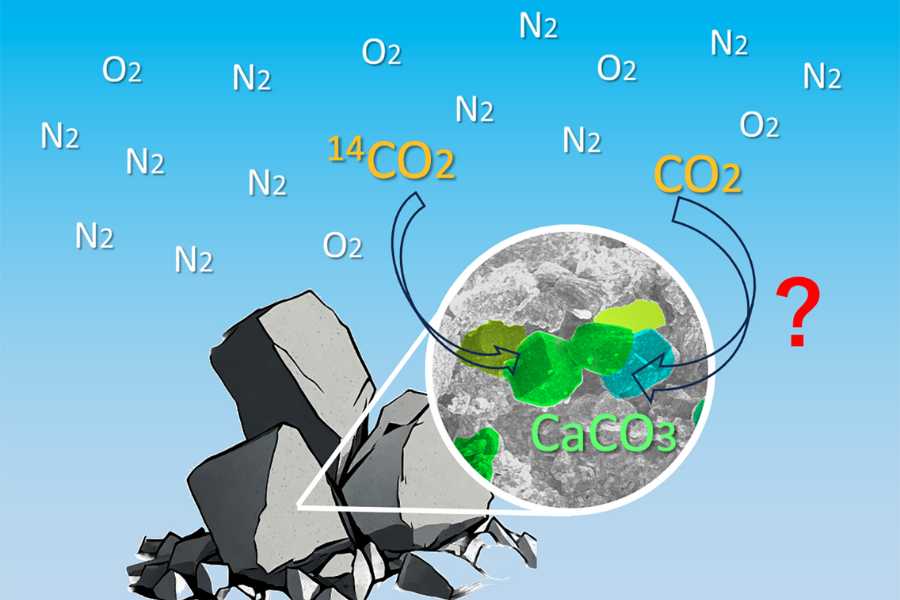Carbon capture has emerged as an essential strategy to mitigate the adverse impact of human-induced carbon dioxide emissions on our planet’s climate.
Researchers at the University of Tokyo and Nagoya University in Japan have made significant progress in verifying carbon capture within concrete, revolutionizing how we approach carbon emission reduction efforts.
The study’s results distinguished between carbon sourced from atmospheric CO2 and that from raw concrete materials. This difference is crucial for certifying concrete as a viable method to offset carbon emissions.
What is carbon capture?
Carbon capture involves capturing carbon dioxide (CO2) emissions produced by industrial activities to prevent them from entering the atmosphere.
Various methods can be used to capture CO2, such as post-combustion capture after burning fossil fuels or pre-combustion capture before fuel burning. Once captured, CO2 can be stored underground or used in industrial processes.
This capturing process helps reduce greenhouse gas emissions and combat climate change by preventing large amounts of CO2 from being released into the atmosphere.
Carbon Capture in Concrete – Why is it Important?
Carbon capture in concrete holds immense significance due to its potential to address two critical environmental concerns:
- Mitigating Carbon Emissions: Understanding and verifying carbon incorporation in concrete from the air and raw materials can help develop strategies to minimize the carbon footprint associated with concrete. This distinction between carbon sources will potentially make concrete a potent tool to offset emissions.
Even though it is typically associated with concrete pathologies, the process that generates calcium carbonate in concrete (CaCO3) effectively captures and immobilizes CO2, extracting the gas from the atmosphere.

- Advancing Sustainable Construction Practices: Concrete, linked to high CO2 emissions, can transition from contributing to climate change to becoming carbon-neutral or even negative through carbon capture methods. This shift supports global initiatives for a circular economy and carbon neutrality in construction, ensuring today’s structures don’t worsen future environmental challenges.
Carbon Capture in Concrete – Research Methodology
According to the University of Tokyo, the research methodology employed in studying carbon capture in concrete was a meticulous and innovative process. The researchers embarked on a rigorous investigative path, utilizing a multi-step approach to unravel the intricate mechanisms behind carbon incorporation. This involved:
- Sample Preparation: Creating hydrated cement paste samples as concrete replicas, meticulously crafted to mimic real-world, concrete composition and behaviour.
- Exposure and Isolation: Strategically expose and isolate concrete samples to varying environmental conditions, allowing distinct carbon interactions to occur—some exposed to the air while others remained sealed.
- Analysis through Advanced Techniques: Employing cutting-edge accelerator mass spectrometry techniques to dissect the carbon isotopic ratios within the samples. This meticulous analysis provided a window into the origins of carbon (carbon-12, carbon-13 and carbon-14), distinguishing between atmospheric sources and raw material origins.
- Evaluation and Validation: Thoroughly evaluate the results against known carbon isotope proportions in the atmosphere at specific points in time. The detailed validation process ensured robustness to the accuracy and reliability of the findings.
The authors noted that the new technique has constraints in assessing carbon capture exclusively within contemporary concrete. It relies on the premise of a stable carbon-14 (14C) concentration in the atmosphere during concrete reactions.
Nevertheless, historical occurrences like nuclear weapons testing in the 1950s had a considerable impact on the atmospheric levels of carbon-14, potentially influencing the accuracy of calculations.

Carbon Capture in Concrete – Research Results
The research into carbon capture in concrete has shown interesting results, which provided a deeper understanding of how carbon integrates into this fundamental construction material. The findings were multi-faceted, such as:
Key Finding | Description | Importance |
Verification of Carbon Origins | The study successfully differentiated carbon sources in concrete, distinguishing between atmospheric carbon dioxide and raw material-derived carbon. This distinction is crucial for certifying concrete as an effective carbon emissions offsetting method. | This verification enables the certification of concrete as a potent tool for mitigating carbon emissions, incentivizing industries to adopt practices that actively capture and sequester CO2. |
Insights into Carbon Sequestration | Analysis of carbon isotopic ratios in concrete samples revealed valuable insights into how concrete interacts with carbon sources, potentially enhancing its capacity as a carbon sink. | Understanding carbon sequestration mechanisms in concrete offers opportunities for leveraging it as a more efficient carbon storage material, revolutionizing its role in sustainability efforts. |
Implications for Industry and Certification | The ability to certify concrete as a means of offsetting carbon emissions holds significant promise for the construction industry. | Certification incentivizes the adoption of sustainable construction methods, promoting a shift towards reducing the environmental impact of concrete production on a larger scale. |
Carbon Capture in Concrete – Researchers' Notes
Professor Ippei Maruyama emphasized the potential economic value of certifying carbon dioxide capture from the air as an emission-offsetting practice.
“As much as 800 kilograms of CO2 is emitted per ton of cement during its production, so reducing emissions has become a significant issue in the concrete industry.
Concrete has long been known to react with CO2 in the air to form calcium carbonate, an undesirable phenomenon because it induces corrosion of the steel bars inside concrete structures. However, the concrete industry is now considering ways to make effective use of this reaction.” (Professor Ippei Maruyama)

Carbon Capture in Concrete – Research Next Steps
The researchers aim to implement their laboratory-developed method in practical, real-world scenarios within the concrete production industry. The team will explore how varying quantities of raw materials utilized in local concrete manufacturing impact the verification process.
This pioneering research promotes the concept of carbon neutrality. It aligns with the circular economy principles, especially in Japan, where the construction industry is pivotal in supporting disaster recovery and business continuity.













